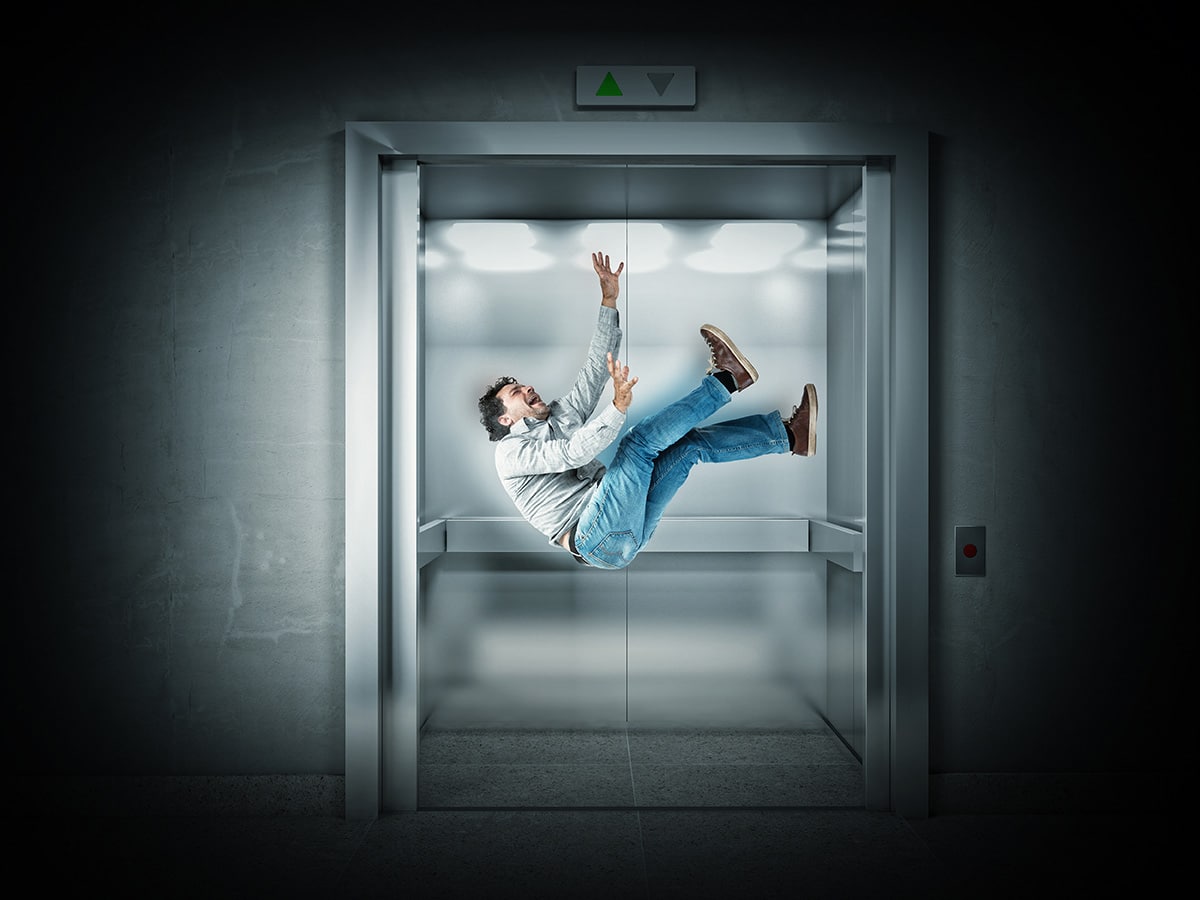Elevators are an integral part of modern architecture providing quick, safe and efficient vertical transportation. Despite their widespread use, numerous myths and misconceptions create unnecessary worries and fear. In this blog post, we seek to debunk many common elevator myths including those perpetuated by Hollywood.
Hopefully, this factual information to ensure your peace of mind and enjoy your ride(and movies!) to a greater degree. Let’s elevate our understanding and dispel these myths once and for all.
Myth 1: Cabled Elevators Can Plummet to the Ground
When most people think of elevators they perceive of them as a “cabled” or “traction” elevator system. One of the most pervasive myths is that if an elevator’s “cable” breaks, the elevator will free-fall to the ground. This is far from the truth. We are not arguing that gravity does not play a role in the operation of the elevator.
However, elevators are designed with multiple safety systems in place, including multiple steel cables (each capable of supporting the full weight of the elevator), counterweighted, an emergency braking system, and a governor system to stop the car in the event of an overspeed. In the unlikely event that cables are compromised, all these safety features prevent a free-fall scenario. Moreover, given the counterweight system, an elevator is only capable of falling “upwards.” This remote possibility is prevented by the inclusion of “rope grippers” on modern day installations.
Myth 2: Jumping at the Moment of Impact Can Save You
Setting aside the fact that an operable elevator system “falling” is for all intents and purposes impossible. The idea that jumping at the exact moment of the theoretical impact can save you in a falling elevator is a complete myth. First, it’s nearly impossible to predict the exact moment of impact. Second, even if you could, the force of the elevator falling would negate any relief jumping might offer. Trust in the elevator’s built-in safety mechanisms, which are your real lifeline. For one, the elevator is not falling. Jumping itself carries its own risk for personal injury or at least the inconvenience of creating an entrapment.
Myth 3: Elevators Are Air-Tight and Can Cause Suffocation
Another common misconception is that elevators are air-tight and can lead to suffocation if stuck for an extended period. Elevators are not designed to be air-tight; they have ventilation systems to ensure a continuous supply of air. In the rare event of being trapped, the bigger challenge might be anxiety, not suffocation. Modern elevators are equipped with alarm systems and communication devices to alert for help immediately.
Myth 4: Pushing the Button Multiple Times Makes the Elevator Faster
Many believe that pushing the elevator button multiple times will make it arrive faster. However, elevator systems are designed to be efficient and respond to the first press of the button. Additional pressing of the button do not influence the speed or priority of the elevator. However, aggressive mashing of buttons might potentially damage the button or at least shorten its life cycle.
Hollywood Tropes Debunked
Hollywood has a knack for dramatizing elevator scenes, contributing to some of the myths we’ve debunked. Let’s address a few common tropes:
Elevator Shaft Climbing: Movies often show characters easily climbing out of a stuck elevator and navigating the shaft. In reality, this is extremely dangerous and nearly impossible for the average person. Elevator shafts are designed for maintenance, not for escape routes by untrained individuals.
Dramatic Rescues: The trope of a hero holding onto someone’s hand to prevent them from falling down an elevator shaft adds to the misconception of elevators as perilous. Such scenarios are highly unlikely due to the aforementioned safety mechanisms in place. Extraction from stalled elevators is to be performed in a methodical fashion where drama, acrobatics, and any excitement are to be removed from the engagement.
Hacking Elevators: The idea that elevators can be easily hacked and controlled remotely for nefarious purposes is another Hollywood exaggeration. Elevator control systems are secure and not accessible for such remote manipulation by hackers. So, aspiring “hackers” would need to physically hack through a locked door and, presumably, stay onsite. They would need to engage in some pretty substantial study to understand the logic of the system. For these reasons, it is unlikely that any aspiring villain will have the time or inclination to engage in controlling the elevator system.
Conclusion
Elevators are marvels of modern engineering, designed with numerous safety features to ensure the well-being of their passengers. By debunking these common myths and Hollywood tropes, we hope to alleviate any concerns you may have about using elevators. Remember, elevators are subject to rigorous safety standards and regular maintenance to keep them operating safely and efficiently. Trust in the technology and ride with confidence.
At Bagby Elevator, we prioritize your safety and comfort, ensuring that our elevators meet and exceed industry standards. Elevate your understanding and let go of these myths as you step into the future with us. In the alternative, just enjoy the movie and know you are safe outside the theatre.

